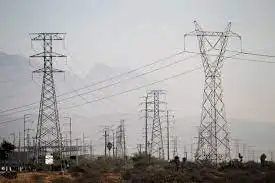Offshore Wind Farms Picture Perfect in Denmark
COPENHAGEN, Denmark -- - Looking out to sea from this city's picturesque harbor, a wall of 200-foot windmills dominates the horizon with rotors silently spinning in the glinting sunshine as sailboats and fishing trawlers glide past.
For most Danes, these towering turbines are anything but an eyesore, and anything but a threat to the environment. In fact, they are featured on postcards and proclaimed attractions by tour guides on ferry boats. They are the pride of the local Greenpeace office, which even owns shares in the project.
Here, the windmills are seen as a graceful gateway to a historic harbor and a proud symbol for an environmentally conscious country that has put itself at the cutting edge of one of Europe's fastest- growing energy sectors: wind power.
So where, Cape Wind executive Jim Gordon might ask himself, did he go wrong in selling his project to build a similar offshore wind farm in Nantucket Sound off Cape Cod? And why, the vocal opponents to Cape Wind might ask themselves, are offshore wind farms in Denmark regarded as environmentally sound and even beautiful -- while they are eyed suspiciously in Massachusetts as a threat to serenity and wildlife?
Perhaps both sides in the intensifying Cape Wind debate could learn valuable lessons from Denmark's success in the wind industry.
Cape Wind is proposing to build 130 wind turbines, spaced a third- to a half-mile apart, across a shoal less than 7 miles off the coast of Hyannis. The turbines would harness the renewable energy through generators that would provide Cape Codders with 75 percent of their electricity, without emitting pollutants.
The project has fostered opposition from a vocal alliance of environmentalists and politicians who believe the project would disturb a pristine body of water and threaten fish and migratory birds who feed in the shallows at the proposed site.
Danish wind-energy advocates say the success of that industry, now providing 20 percent of Denmark's total power, was achieved by making the offshore wind farm projects a kind of public trust, with careful attention to the concerns of environmentalists and the local community.
Since the 1970s, the Danish government has promoted the industry through tax incentives and subsidies, enabling it to grow steadily. Perhaps the biggest breakthrough was the development of the Middelgrunden Offshore Wind Farm Cooperative, the first large project lying less than 2 miles off the beautiful harbor of Copenhagen. Twenty turbines, each producing 2 megawatts of power, wrap themselves around the entryway to the harbor and provide energy for some 40,000 households.
The previous government, led by the Social Democratic Party, provided substantial subsidies to Middelgrunden. Completed in 2001, the project paved the way for two other larger offshore parks. One, off the Danish west coast, was completed last year and is the largest offshore wind farm in the world. The other, off the east coast, is expected to be completed later this year. A conservative party now leads Denmark's governing coalition; it also supports wind power, but believes the government subsidies should be cut back for an industry that is strong enough to stand on its own.
According to Jens Larsen, a civil engineer and the developer of Middelgrunden, the key to the early successes in Denmark came in making the first wind farms collectively owned enterprises. As a result, Middelgrunden is controlled by 8,500 individual investors, who own half the project, and the municipal utility provider, which owns the other half.
Larsen is widely viewed as the founding philosopher of the wind industry's politics of inclusion, and he points out that it was a seven-year battle to build the project.
From a fishing boat in the Copenhagen harbor, Larsen proudly pointed to the harmonious arc of the 20 wind turbines that stand at approximately one-third-mile intervals and hug the historic harbor. Even with the engine cut on the boat, the sound of the 160-foot rotors spinning was virtually impossible to hear over the splashing waves. Wind surfers worked the waters just beyond the shadows of the turbines. And fishing boats set up nets not more than a few hundred yards off the concrete bases of the turbines, finding that the fish are actually drawn to the structure that the foundations provide.
"Aren't they beautiful in a way?" he asked.
"The main reason for our success is local ownership. There has to be a philosophy driving the industry, especially in the early phases, for people to accept it. Our goal was to make this locally owned, sustainable energy," he said.
"If it is just a big company doing a wind farm, the community doesn't feel it owns it. And then they will resist," he said. "And once you encounter resistance, you are going to have to work harder and harder against the negativity."
The success of Middelgrunden opened a gateway for the much larger offshore projects. The massive Horns Rev offshore wind farm, 8.4 miles off one of the most beautiful beaches on the country's west coast, is the most comparable in terms of size and location to the proposed Cape Wind site in Nantucket Sound.
Completed last year, Horns Rev has 80 towering wind turbines, each producing 2 megawatts of electricity. That's enough to power 133,000 households. It lies along a reef that provides a sensitive ecosystem for fish, seals, porpoises, and migratory birds. Intense environmental impact studies and assessments were ordered as part of the approval process.
Tarjei Haaland, who has headed up the wind industry campaign for Greenpeace in Denmark, is a member of a group of environmentalists commissioned by the government to carry out ongoing environmental impact studies of the existing offshore wind farms.
"The preliminary study shows that there is no serious impact on the environment. There are some changes to the environment, but no damage as far as we can see," he said.
"The [wind energy] industry here has been very attentive to the environmental concerns, and I think in the long run it has contributed to their success," he said. "The fundamental experience in Denmark is that you have to get local people involved. That is the way forward."
In fact, the big offshore wind farms like Horns Rev have become something of a tourist attraction with an information center on the benefits of wind power and a lighthouse from which binoculars can be rented to view the forest of wind mills that harness the energy.
Denmark has become an international powerhouse in the industry. Danish companies control an estimated 50 percent of the $4 billion worldwide wind industry. Although the Middelgrunden project was a cooperative, the two other large offshore wind farms are being built by large public utilities that foresee big profits in wind. The industry says it has created some 25,000 jobs in a country of just more than 5 million people.
The wind industry in Denmark is not without its critics. But even the environmental watchdog groups are quick to add that the initial fears of potential damage to fish and birds were largely unfounded.
The Danish Ornithological Society chairman, Christian Hjorth, whose group has been part of the environmental impact assessment of offshore wind farms, said, "It is fair to say that the early criticism of the offshore projects was exaggerated, but that does not mean there are not concerns."
For example, he said that an estimated 800,000 sea ducks rest in the waters that are approximately 30 feet deep in the Kattegat waterway, which lies between the northeast coast of Denmark and the southwest coast of Sweden.
Hjorth said that his organization has succeeded in greatly modifying and downscaling what was to have been a massive wind farm in the Kattegat waterway because it would have disrupted the migration patterns of the ducks. He said the government has been attentive to the concerns his group has raised.
The most vocal opposition to wind farms has come from an organization called Neighbors of Wind Mills, which has 400 registered members. Industry advocates compare that to the pro-wind farm movement including groups like the Wind Mill Owners Association, which boasts 100,000 members who either own small windmills or have bought shares in larger wind farms.
Still, Erwin Thoreus, chairman of the Neighbors group and an industrial chemical salesman, contends that the wind turbines have proven noisy and that the shiny rotors often create a distracting glare in the sunlight. Thoreus, who lives only a few hundred yards from a towering windmill in a field adjacent to his home, said the annoying glare was like "a flashbulb on a camera going off in your living room every four seconds."
But even Thoreus said the offshore projects are far more preferable and have proven less obtrusive to nearby residents than the hundreds of inland wind farms that dot the Danish landscape.
"We support the offshore wind farms. They are better than the sites on land," he said.
Related News

IAEA - COVID-19 and Low Carbon Electricity Lessons for the Future
LONDON - The COVID-19 pandemic has transformed the operation of power systems across the globe and offered a glimpse of a future electricity mix dominated by low carbon sources.
The performance of nuclear power, in particular, demonstrates how it can support the transition to a resilient, clean energy system well beyond the COVID-19 recovery phase.
Restrictions on economic and social activity during the COVID-19 outbreak have led to an unprecedented and sustained decline in demand for electricity in many countries, in the order of 10% or more relative to 2019 levels over a period of a few months, thereby creating challenging conditions…




